Modelling the Transport and Transformation of Urban Aerosols
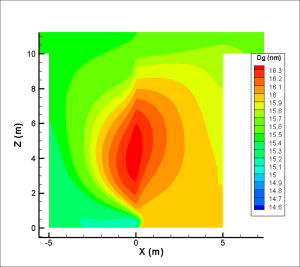
An urban street canyon represents an environment where pollutants such as particulate matter accumulate to high levels due to high volumes of traffic. As adverse health effects are being attributed to exposure to particulate matter, an investigation of the dispersion of aerosols within such environments is of growing importance. The spatial heterogeneity of urban features and the complex interplay between microphysical aerosol processes and micrometeorology represents a challenge to both dispersion modelling activities and field observations. Measurement campaigns generally have insufficient resolution to represent aerosol particle transport and transformation adequately and must be informed by appropriate dispersion modelling techniques. Computational Fluid Dynamics techniques are able to represent heterogeneity of urban flow conditions by the solution of transport flow equations. When coupled with an appropriate multiphase method, the transport and transformation of particulate matter may be characterized.
Key Results
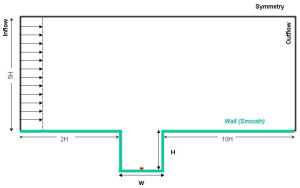
The factors which influence the emissions of ultrafine particles from canyons was investigated at a range of flow conditions. Both vertical turbulent and vertical advective fluxes contribute to the overall ventilation characteristics of street canyons. Although turbulent flux dominates when forced convection is dominant, the relative extent of either process may be modified by natural convection. These parametric tests allow one to understand the implications of the simplifying assumptions within simpler operational models. We then derived a simple parameterized numerical prediction model for canyon top UFP venting which is then compared with tower based micrometeorological flux measurements obtained during the REPARTEE & CityFlux field experiments. The results have been published and may be downloaded at: http://www.atmos-chem-phys.net/10/2475/2010/ .
Modelling work was done to evaluate the importance of aerosol processes during dispersion within urban street canyon. For conditions considered within a 2D framework, it was found that aerosol processes such as condensation of involatile species and coagulation do not modify aerosol properties significantly. More work is needed to consider the implications of aerosol processes within a wider range of canyon flow conditions.
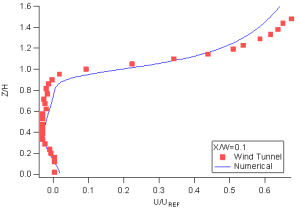 Fig 3A
Fig 3A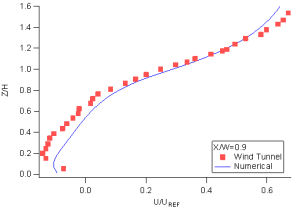 Fig 3B
Fig 3B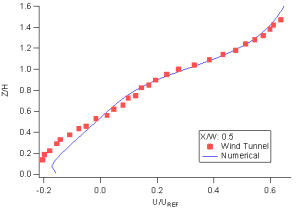 Fig 3C
Fig 3CThe influence of secondary processes on organic aerosol transformation during transport within a street canyon was investigated using a simplified CFD multiphase approach. Assuming representative conditions, evaporation, oxidation and re-condensation of semi-volatiles was found to be of limited significance at canyon scale and may be ignored for computational efficiency. However, the extent of partitioning is found to be sensitive to molar mass of the carbonaceous involatile carbon core, demonstrating the requirement for better characterization of the absorptive nature of primary emitted particulate material in the urban environment. The chemical nature of urban aerosols is complex, with only a fraction of 20,000 compounds identified. Due to the weak understanding of the chemical nature of urban aerosols, the “involatile carbonaceous molar mass” may serve as a tunable parameter to match observations to simplify the representation of organic component partitioning in canyons (rolling all complexities into the tuning parameter).
References
Ketzel, K., Louka, P., Sahm, P., Guilloteau, E. & Sini, J.-F.: The use of computational fluid dynamics in modelling air quality in street canyons in Optimisation of Modelling Methods for Traffic Pollution in Street,Final Report for EU Trapos Project, Chapter 2.2: pages 86-93, Editors Berkowicz, R., Britter, R. & Sabatino S.D., published online at http://www2.dmu.dk/AtmosphericEnvironment/trapos/TheBook/TRAPOS_Book.pdf , 2004.